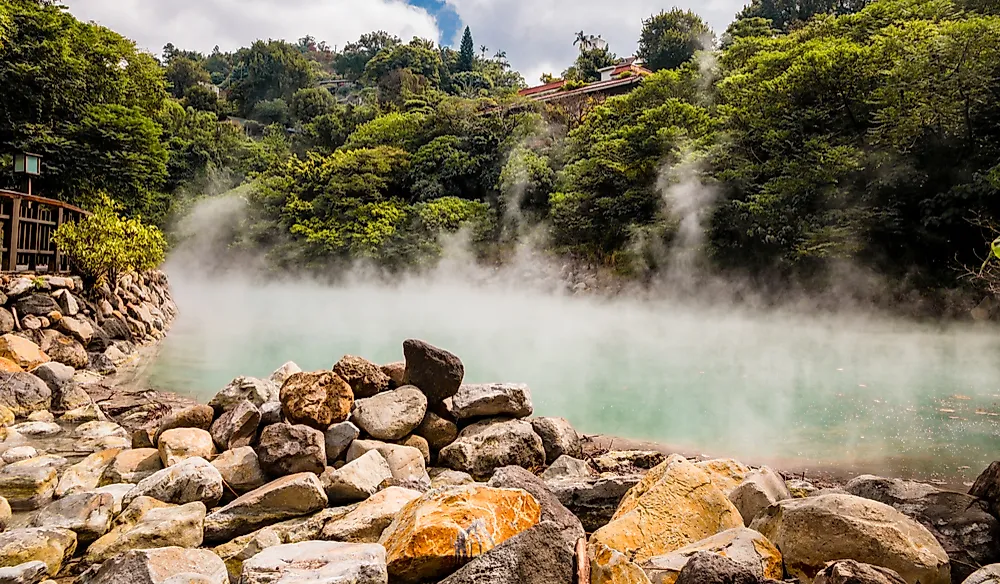How Are Hot Springs Formed?

A hot spring is a spring of geothermally heated water that rises from the Earth's crust to the surface. Also referred to as thermal or geothermal springs, hot springs vary in size and produce water that ranges in temperature from warm to very hot. While no universally accepted definition exists, examples of criteria to define hot springs include water that is warmer than its surroundings, warmer than human body temperature, warmer than the ambient ground temperature, or warmer than 50 °C (122 °F). Some hot springs are safe for bathing, while others contain water hot enough to boil an egg.
Formation
Hot springs can form in several ways, but most commonly occur when rainwater or groundwater is heated by magma underneath Earth's surface. Cracks or faults in the Earth's surface allow water to flow deeper towards the mantle, where it comes in contact with hot rocks that heat the water. Underground pressure then forces the hot water upwards, back to the Earth's surface through the same cracks or faults. The amount of underground pressure determines how fast and how far the hot water flows. This type of hot spring usually forms in areas with volcanic activity.
Hot springs can also be formed when absorbed rainwater is heated underground by the radioactive decay of elements present in the rock. For every 1,000 feet of depth, the groundwater is heated by an additional 15 °F. Additionally, the hot water becomes more viscous and rises up through cracks and faults to the Earth’s surface. As the hot water reaches the surface, it can flow slowly or quickly depending on the amount of underground pressure. Generally, the flow rate of hot springs differs depending on the volume of underground water and the amount of underground pressure.
Uses of Hot Springs
Hot springs can be popular tourist attractions for several reasons. For example, hot springs contain very high mineral content, including radium, lithium, and calcium, which some believe have medicinal values. Hot springs are also sometimes included in rehabilitation clinics for individuals with disabilities. Several spas have been created around hot springs, such as the many onsens of Japan. However, hot springs with very hot water can contain certain dangerous chemicals that are harmful to the body and can cause burns.
Notable Hot Springs
The largest hot spring in the world is the Grand Prismatic Spring, located in Yellowstone National Park, within the United States. The hot spring is approximately 110 m wide, 50 m deep, and has a flow rate of at least 2,100 L per minute. The Blood Pond in Japan is characterized by bright red water caused by rust and has a high concentration of iron. Jigokudani is a volcanic hot spring in Japan, where snow monkeys are usually seen bathing. Other notable hot springs include Elizabeth Spring, Lava Hot Spring, and Glenwood Spring.











